Wo Long: Fallen Dynasty review – enter the dragon
Dominating this hardcore action role-playing game with warlords at your side

When it comes to punishingly difficult but satisfying action combat, few do it as well as the Dark Souls series – and open world spiritual successor Elden Ring has raised the bar even higher. 2017’s Nioh came pretty darn close, and its follow-up Wo Long: Fallen Dynasty smartly builds on those foundations.
While Team Ninja’s first two Nioh games were set in the Sengoku period of feudal Japan, this takes place in 3rd century China during the warring Three Kingdoms era. A heavy blend of dark fantasy combines creatures of Chinese mythology with an original plot involving a mysterious elixir that turns those affected by its power into demons.
The essentials are still there, namely some incredibly masochistic challenges that you’re going to have to master or die trying, especially when even the first boss is no slouch. However, with some new smart additions that also neatly tie in with its setting, this might also be the most approachable entry point to the genre.
Two’s company, so is three
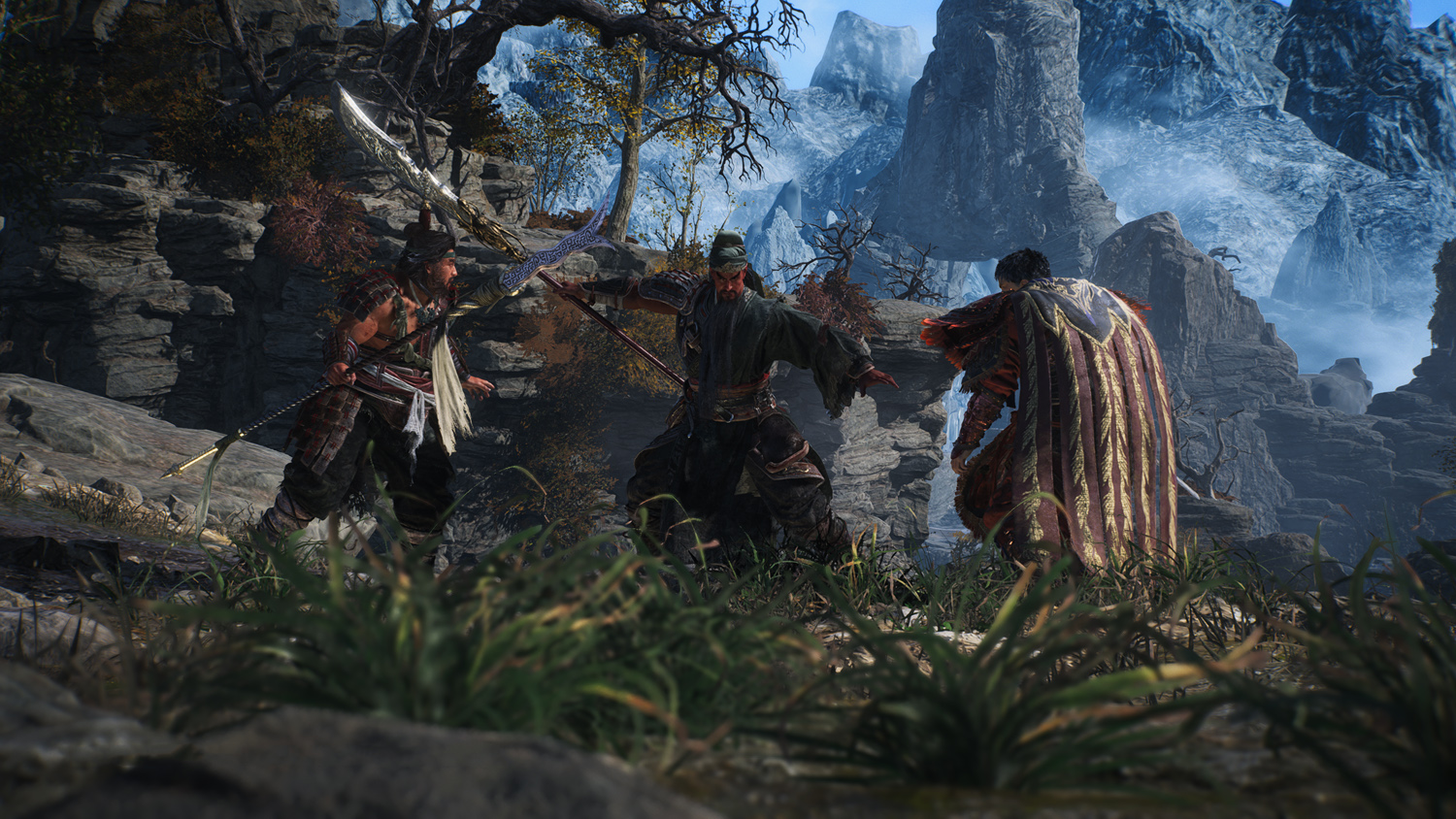
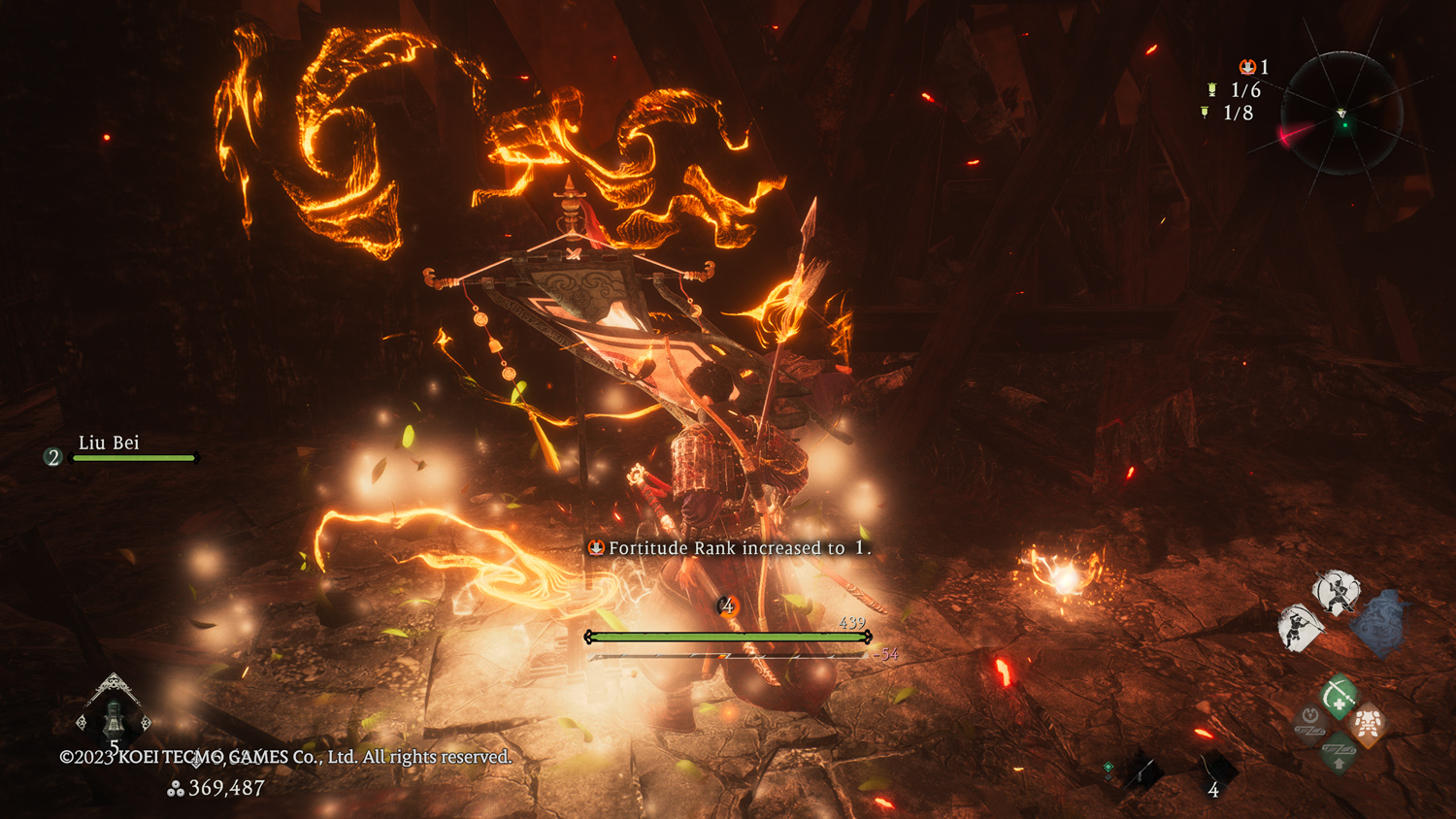
Rather than the interconnected design of Dark Souls, Wo Long: Fallen Dynasty’s journey takes you through ancient Chinese history mission by mission. It’s not just that you’ll be encountering increasingly challenging enemies, from corrupt warlords to mythical beasts, but you’ll also meet a growing cast of larger-than-life historical figures who will join you in battle.
While summoning other players is still possible, and typically the way to make these tough-as-nails games a bit easier, having AI-controlled characters feels better suited for those after a single-player experience. You can even summon a second AI ally for added support, while in several missions a party of three is already the story default.
They won’t necessarily fight your battles for you, though you can cheer them to temporarily puts them in a more aggressive state. Either way, it’s that bit more comforting to have a helping hand or two (or just someone else for enemies to pick on) without depending on randoms over the internet.
It’s almost cruel on the few occasions where you start a mission without an ally, then discover that summoning reinforcements not intrinsically tied to the narrative costs a summoning seal. You need a new one each time you die, too, which feels a tad stingy. Still, if you’re partial to any of these warriors, the more you use them the more effective they become as their oath level with you increases.
Many of the allies met during the story can awaken a divine beast within them to aid in battle, either as a kind of ultimate attack or a huge temporary buff. These do however take a while to charge up, so during a boss fight you’re often only able to use it once. It’s worth saving as a last ditch attempt to turn a fight around.
Warrior’s spirit
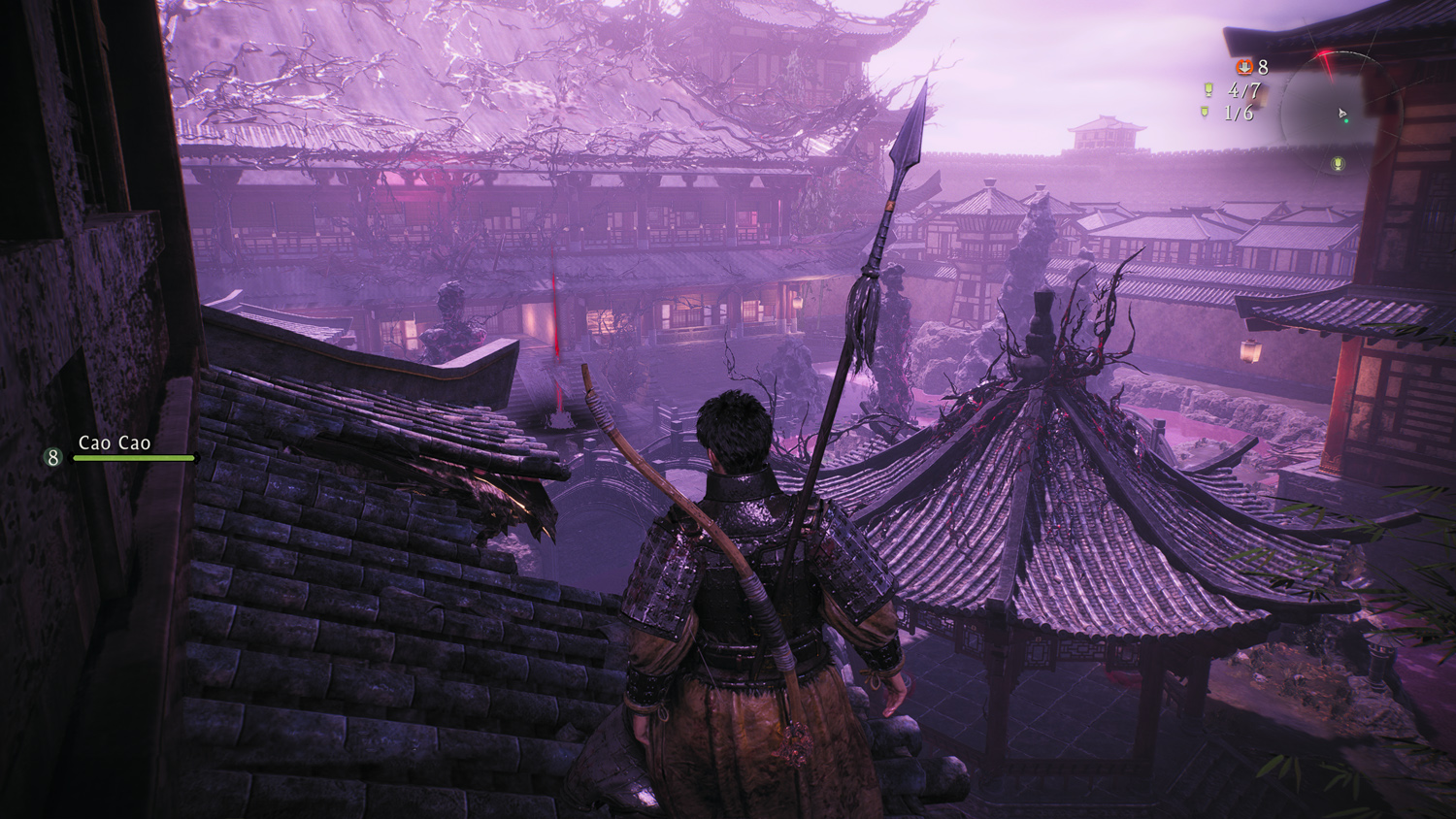
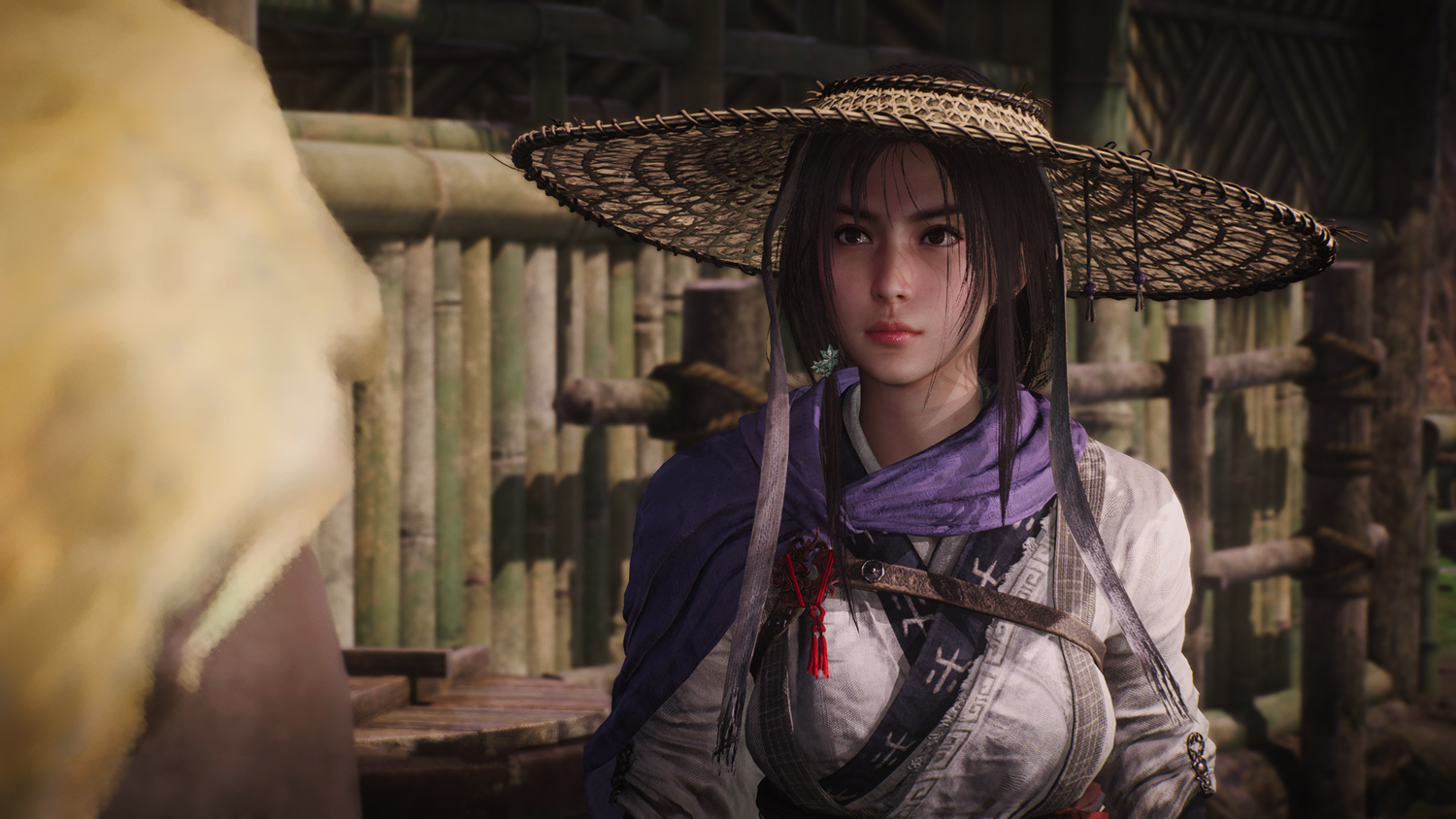
Wo Long takes plenty of inspiration from Sekiro, particularly the importance of deflecting attacks. It also forgoes a typical stamina system and instead you manage a gauge that represents your spirit. Certain actions cost spirit, as does taking damage, and if it falls too low you can be left open to a punishing attack. That’s why being smartly on the defensive is crucial to survival. Instead of blocking, the best defence is deflecting, which actually restores your spirit.
Timing and being able to parse your enemy attacks is vital then, though fortunately you’re rarely memorising long combos, and the most hard-hitting attacks are visibly telegraphed so you’re able to anticipate them. More outrageous is that once you’ve mastered the timing, you’ll realise anything can be deflected, whether it’s a supposedly unblockable critical attack or elemental projectiles.
Reversals that deflect an enemy’s most powerful attacks also leave them staggered, so you can let rip with a fatal strike. There’s an added cinematic flourish, from both the dynamic camera and your protagonist’s own stylish animations. It’s immensely satisfying.
You can also sometimes take the stealthy approach, despite the lack of a crouch button. Instead, you level up a stat that makes you less visible and audible to enemies, while gently nudging the analogue stick to creep up behind an enemy for a backstab. Jumping is more straightforward, and better for reaching higher places to position yourself for an aerial takedown.
There are plenty of weapons to discover, from swords to spears to clubs, and you can also opt for occasional ranged combat with a bow or crossbow. Gathered materials are used to upgrade your gear at a smithy, though you’re just as likely to find something better a mission or two later anyway.
Wo Long has a bit of a loot problem. There’s just so much it becomes a bit meaningless, so you’re better off selling most of it and equipping whatever has the highest stat, instead of digging into the ridiculously incremental benefits of each.
Capture the flag
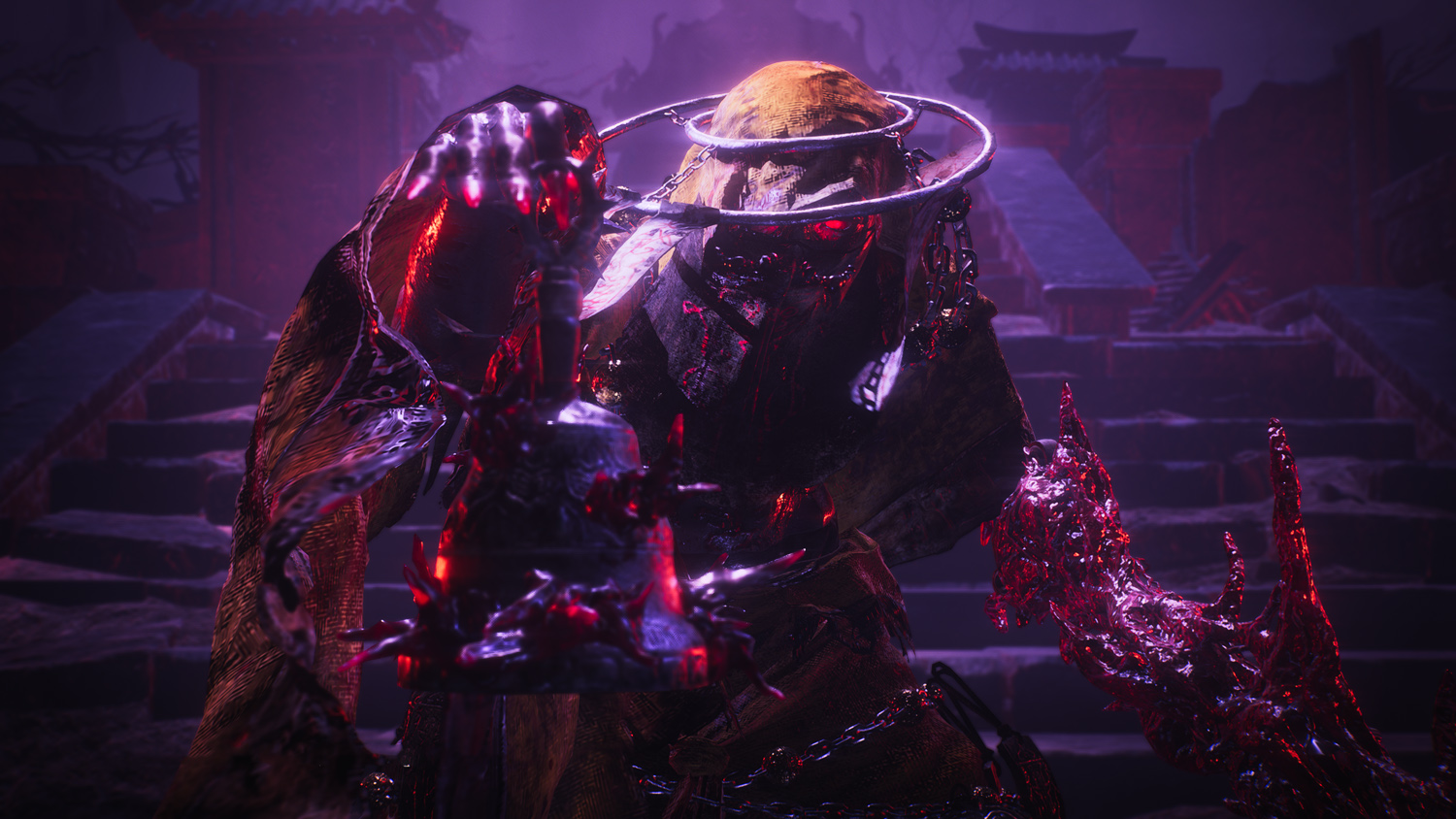
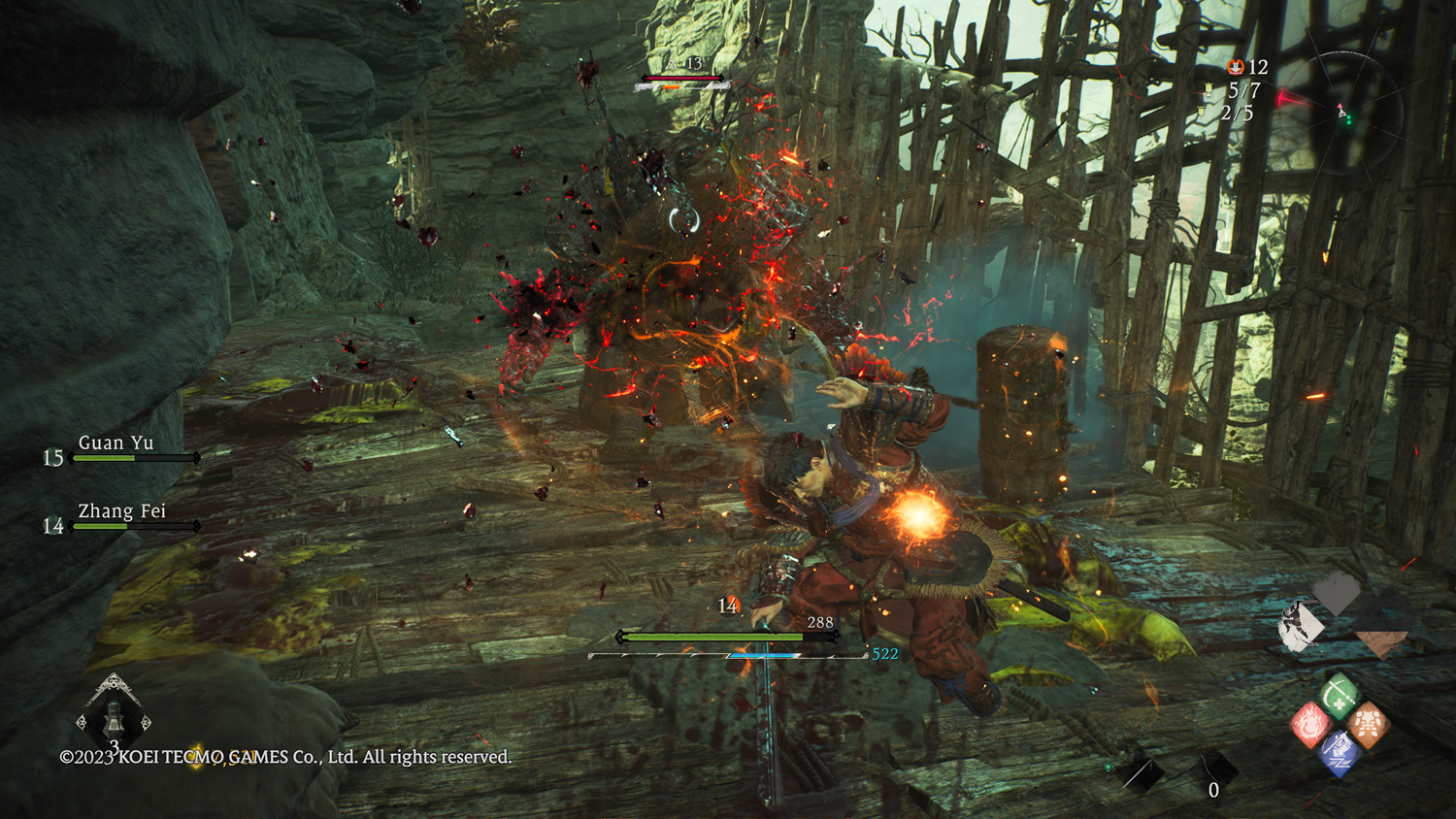
Wo Long’s epic battles raging between warring forces are largely relegated to cutscenes, leaving you to pick up the pieces in ravaged villages, flooded valleys, and burning temples. The level design is nothing to write home about in terms of art direction, secrets, or world-building, and the optional side-missions simply re-hash the same maps, or rather just a fraction of them. Still, it does try to capture the same sense of dominating the battlefield through its flag and morale system.
Besides levelling up your character like any other RPG, your morale level indicates how strong you (and your enemies) are. If your morale is 1 while an enemy’s is 8, you know to nope out of there. Defeating weaker enemies and landing special attacks like fatal strikes and backstabs, increases your morale, while lowering theirs. On the flip side, get hit by an enemy’s critical attack and your morale goes down while theirs go up. You also lose all morale gained if you die.
That’s why it’s paramount to also plant flags at set points in a mission to raise your fortitude, a value that also represents your base morale – in other words the lowest it will fall to upon death. Planting more flags in a level means you’ll maintain a high morale, which is critical when you’re likely to hit a few tough brick wall bosses along the way.
As well as improving your strength and defence, you can also perform wizardry spells, including buffs as well as magic attacks, but these also require you reach a certain morale before they unlock. One spell learned early on greatly reduce damage taken, which is incentive enough to boost your morale ASAP.
Wo Long: Fallen Dynasty verdict
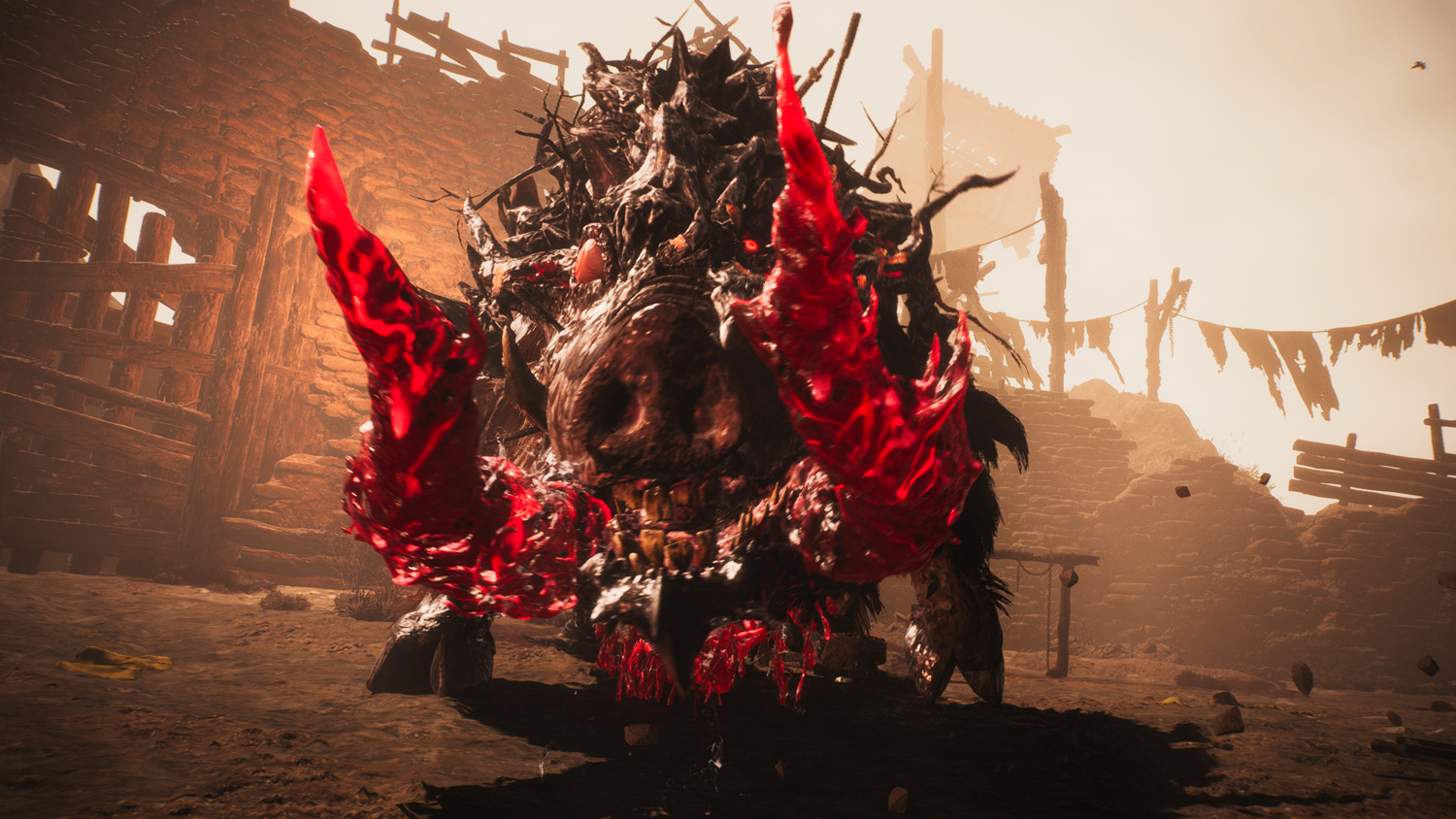
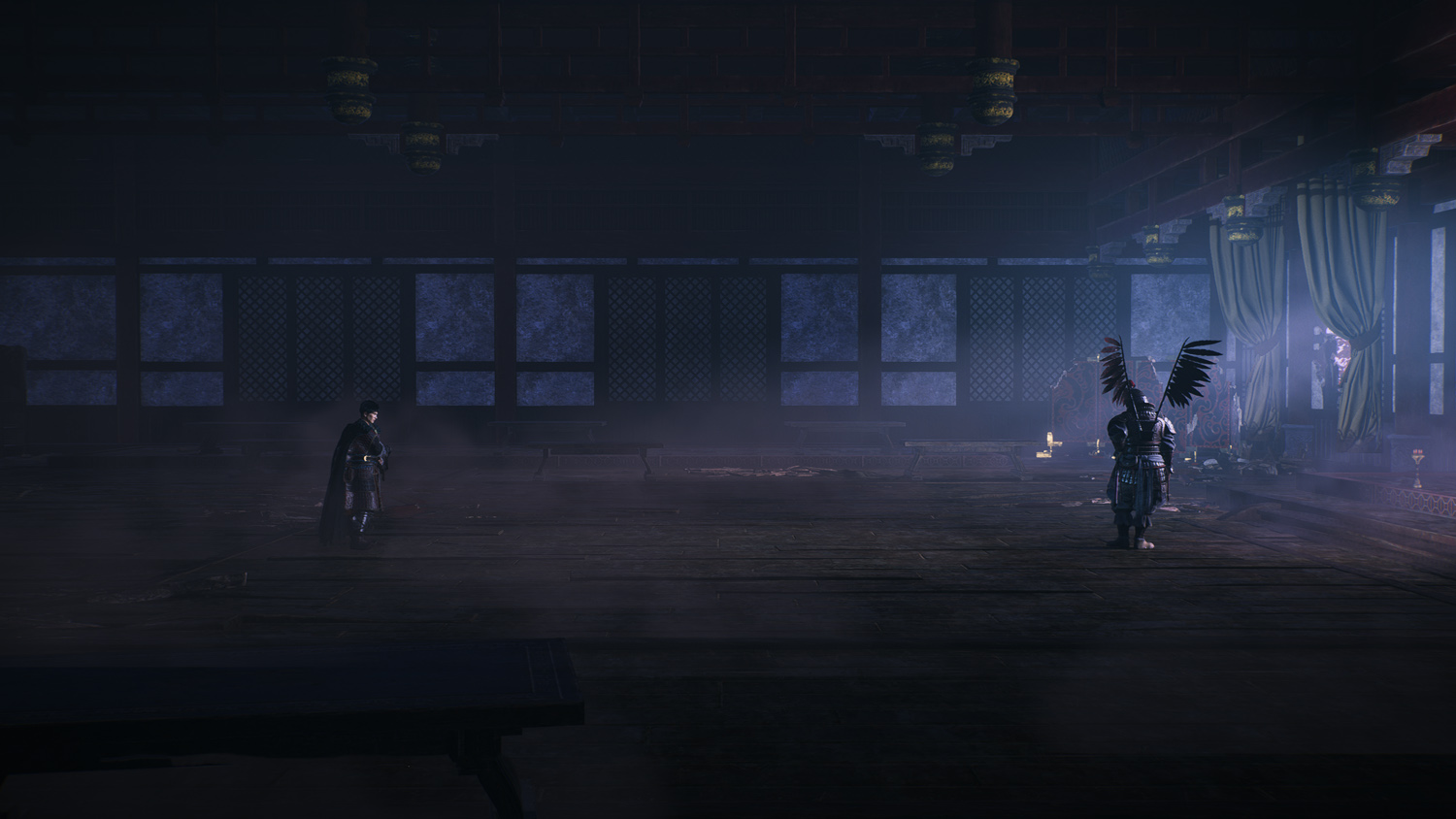
With a large group of legendary allies to fight alongside you and a morale system to help gauge the challenges that awaits, Wo Long: Fallen Dynasty avoids being a mere reskin of Nioh. It instead builds on that series’ foundations with a more approachable design to its hardcore formula.
It’s still not on the same level as what Dark Souls and Elden Ring have achieved in terms of world-building, but when it comes to the fierce fights with demonic warlords and mythical beasts, making the most of your spirit and mastering deflection is a kind of satisfaction few other action games can compare with.
Stuff Says…
Satisfying combat mechanics make this punishing action RPG more approachable
Good Stuff
Being able to deflect any attack
Helpful AI companions
Flag system incentivises thorough exploration
Still challenging and rewarding
Bad Stuff
No crouch button for stealth
Too much forgettable loot
Needing limited items to summon more help



